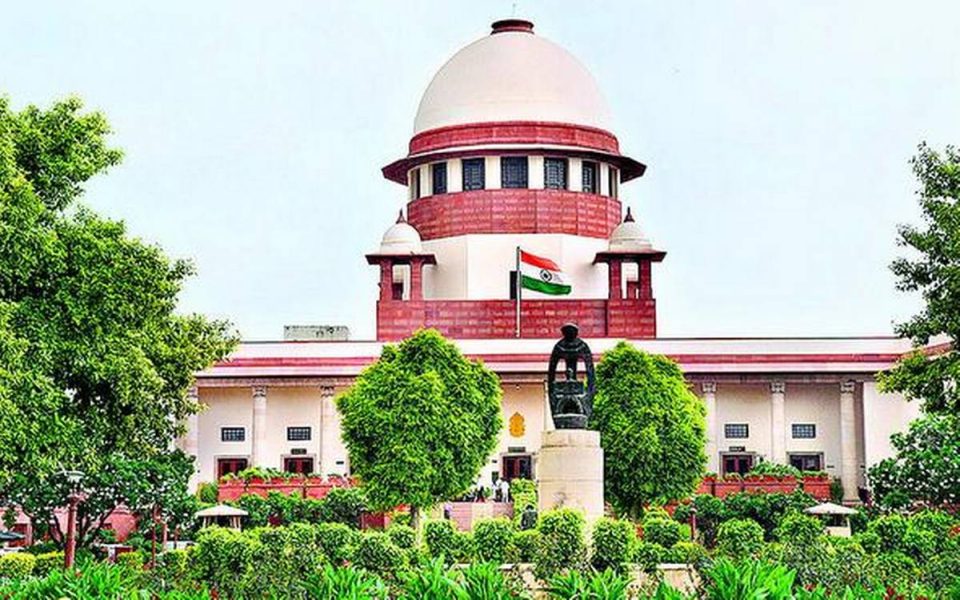
Simplified: Why are Maharashtra and Karnataka sparring over border?

Nerves are frayed in Karnataka, especially in the Belagavi district bordering Maharashtra. As the police beefed up security arrangements, the Supreme Court on Wednesday heard arguments about the maintainability of a petition filed by the Maharashtra government, challenging some provisions of the State Reorganisation Act, 1956. The state has claimed, rather, demanded 865 villages from five districts of Karnataka.
Recent incidents
The Maharashtra-Karnataka border row has escalated over the past two weeks. A clash was reported from an inter-college fest in Belagavi, while Congress members in Mangaluru City Corporation (MCC) council have raised objections against a proposal to install a statue of Chhatrapati Shivaji in the city.
The clash at the Belagavi college allegedly started after a student was seen waving the traditional Kannada/Karnataka flag. Marathi students apparently got upset over this and allegedly assaulted the flag-waving student.
Also read: Maharashtra-Karnataka boundary dispute: Security tightened in Belagavi district
On the other hand, the problem with the statue cropped up when Opposition leader (Mangaluru corporation) Naveen D’Souza opposed the move, pointing out the position of the Maharashtra Ekikaran Samiti (MES) against Karnataka. He said it would be improper to install the statue at a time when the MES was trying to disrupt peace on the Karnataka-Maharashtra border.
What the conflict is about
At the crux of the border dispute is Maharashtra’s contention that Belagavi and some other Marathi-speaking areas were wrongly given to Kannada-majority Karnataka in the language-based reorganisation of states in the 1950s. The matter has been in the Supreme Court for several decades.
Parliament passed the State Reorganisation Act in 1956. The Act was based on the findings of the Justice Fazal Ali Commission appointed in 1953. It submitted its report in 1955.
Based on the Act, Mysore state (later became Karnataka) was formed on November 1, 1956. And that is when differences with the neighbouring Bombay state (later Maharashtra) cropped up. Maharashtra felt that Belagavi, the north-western district of Karnataka, should have been a part of it.
Also read: Won’t give an inch of land to Maharashtra, asserts Karnataka CM Bommai
Since then, Maharashtra and Karnataka have argued over the inclusion of several towns and villages along the state border. This decade-long violent agitation led to the formation of the MES, which holds sway in parts of the district and the city.
The Centre’s solution
The Centre set up a commission under retired Supreme Court judge, Justice Meharchand Mahajan, on October 25, 1966. The report was supposed to be a binding document for both states and end the dispute once and for all.
The commission submitted its report in August 1967. It recommended that 264 towns and villages of Karnataka (including Nippani, Nandgad, and Khanapur) be merged with Maharashtra, and 247 villages of Maharashtra (including South Solapur and Akkalkot) be given to Karnataka.
Watch: Karnataka-Maharashtra border dispute: Maratha Mahasangh stages protest
The report was tabled in Parliament in 1970, but it was never discussed. And the fracas continued. The unresolved issue has led to political polarisation in the border areas of Belagavi, and the MES has successfully turned it into a poll issue.
The court battle
In 2004, Maharashtra approached the Supreme Court, challenging the State Reorganisation Act. It demanded that 865 villages and towns from five Karnataka districts — Belagavi, Bidar, Kalaburagi, Karwar, and Vijayapura — be merged with it.
However, the maintainability of the petition remains challenged to date. Karnataka has cited Article 3 of the Indian Constitution to argue that the SC cannot decide the borders of states and only Parliament can do so. Maharashtra has referred to Article 131 of the Constitution, which says that the SC has jurisdiction in cases related to disputes between the Centre and states.
Why does trouble erupt every winter?
Karnataka started building the Suvarna Vidhana Soudha (Legislative Assembly) in Belagavi in 2007 to stamp its control over the region. The building was inaugurated in 2012. Since then, winter legislature sessions have been held there annually.
Also read: Prohibitory orders issued in Belagavi amid violence on border row
However, every time the Karnataka Assembly session is held in Belagavi, the border issue crops up as well. In 2021, Kannada activists blackened an MES activist’s face for organising an event demanding the merger of Belagavi with Maharashtra. Days later, the statue of freedom fighter and Kannada icon Sangolli Rayanna was vandalised in Belagavi city.
This year, too, there are fears that more trouble is in store for the region as the border issue has already flared up.
(With agency inputs)


